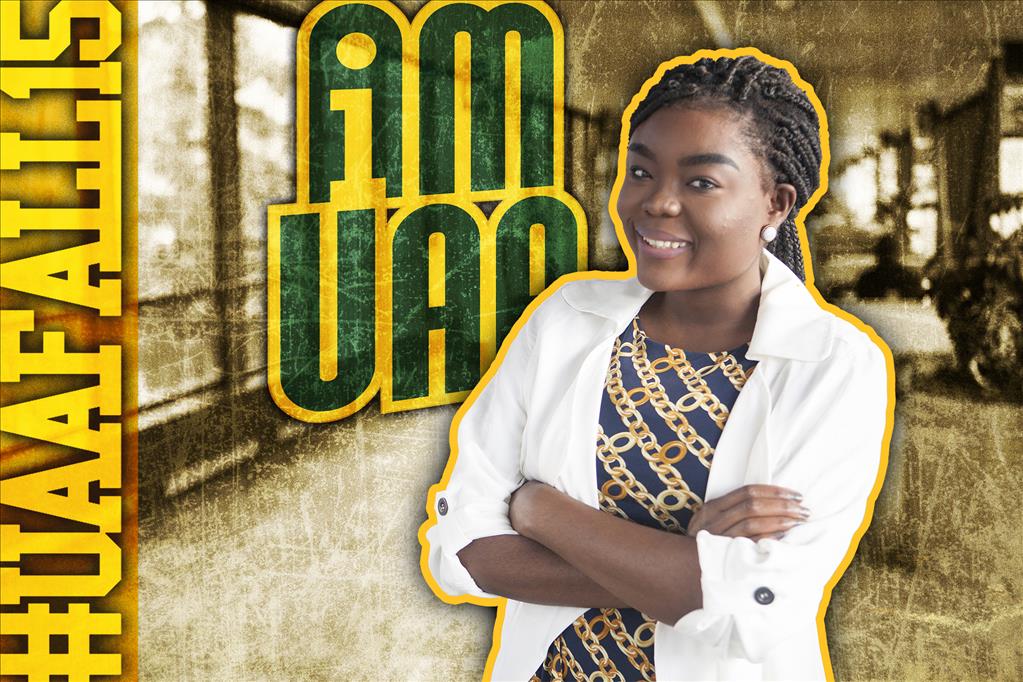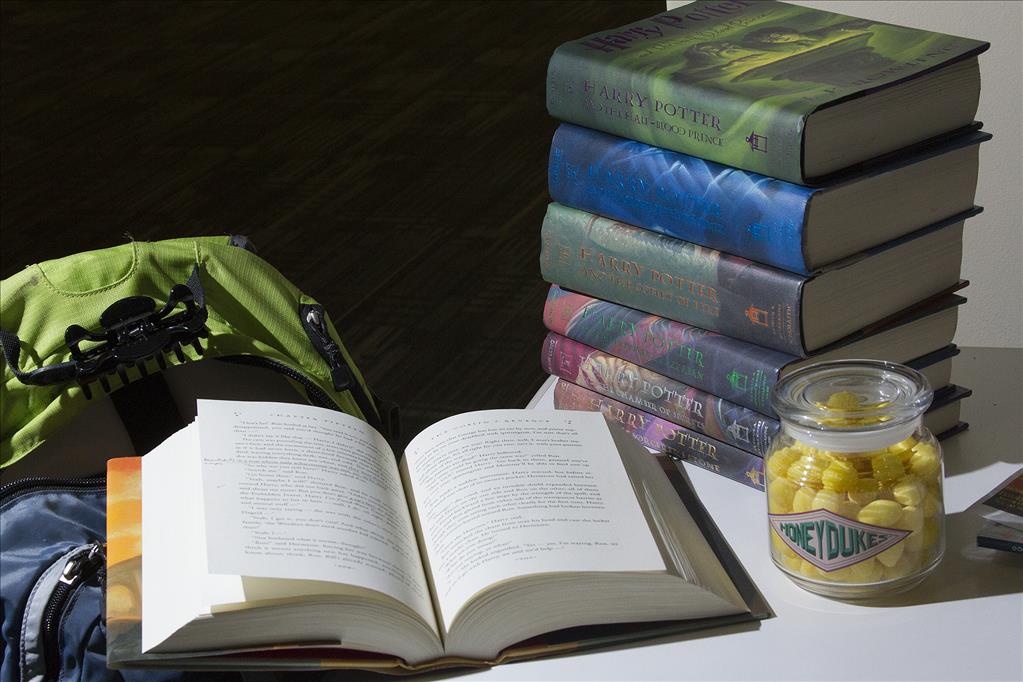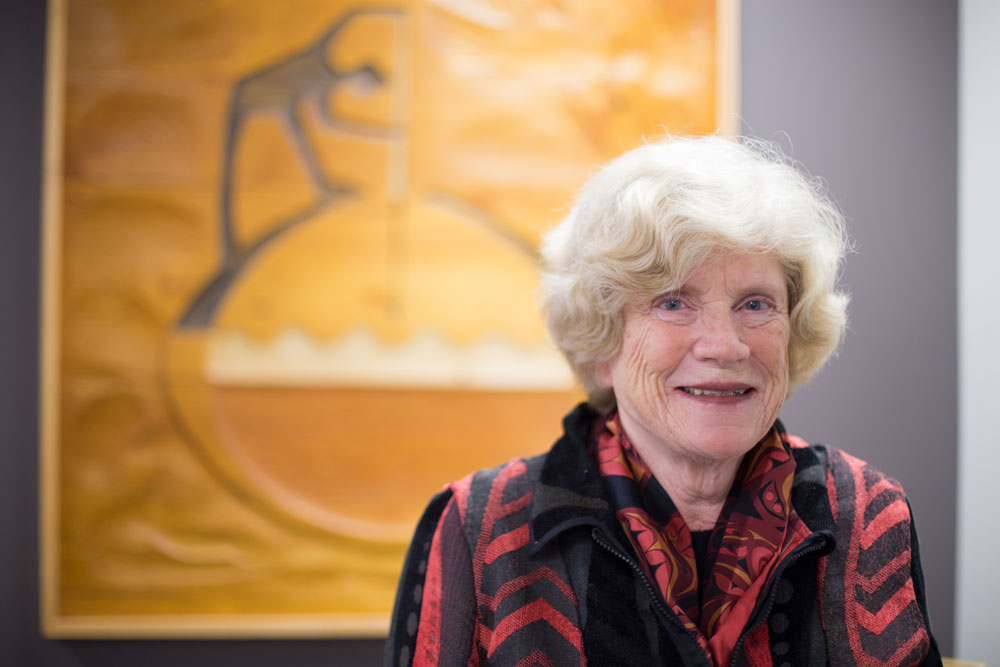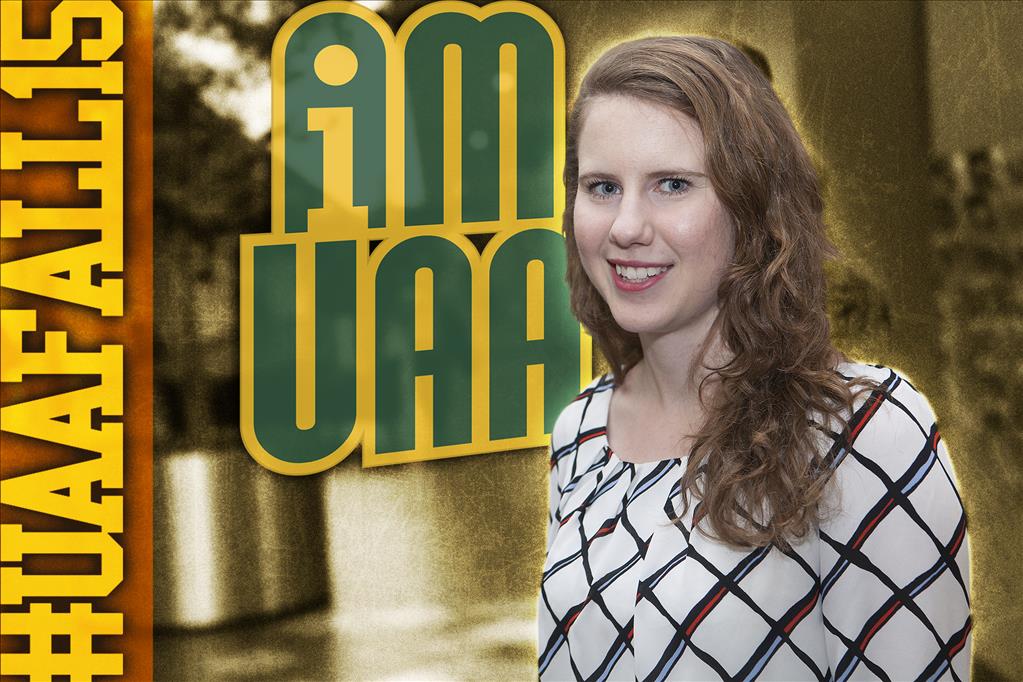Smash and rescue
by Joey Besl |
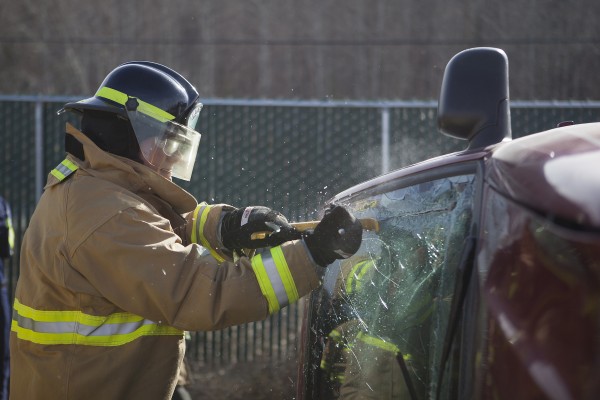
Fire science and emergency medical service (EMS) students team up once a semester
for Vehicle Extrication-a one-weekend intensive course held this year at Chugiak Volunteer
Fire Department.
(Photo by Philip Hall/University of Alaska Anchorage)
A metal fence separates the parking area from the gravel lot at Chugiak Volunteer Fire Department. On one side, muddy pick-up trucks and Subarus are parked in rows along the perimeter. On the other side of the fence, toppled mini-vans and stripped-clean wagons sit surrounded by shattered glass. Make sure you park on the correct side of the fence at UAA's Vehicle Extrication class-otherwise, industrious students may try and turn your sedan into a convertible.
Of course, there's no real danger of your car being picked clean-the junkyard across the street donates plenty of clunkers for the class. However, there is real danger for the students. Once a semester, fire science and emergency medical service (EMS) students meet in Chugiak to rip apart vehicles and rescue victims from simulated wrecks. Under the watchful eye of their professor and a crew of volunteer firefighters, students get a taste of the crises they may see in their future careers.
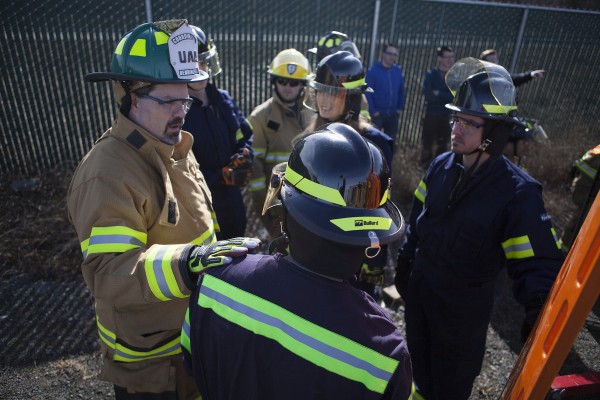
Professor Tim Benningfield talks his students through the extrication process.
(Photo by Philip Hall/University of Alaska Anchorage)
"Tear some cars up"
Vehicle Extrication class brings together two sets of students. The folks in fire gear are working toward associate degrees in fire and emergency services technology. The others are EMS students focused on end-of-semester exams, which double as their state certification. During the class, though, both groups work together to rescue their victims, just like they would in a real emergency.
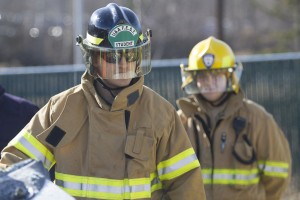
UAA F.E.S.T.--Fire and Emergency Services Technology--is among the best acronyms on campus (Photo by Philip Hall/University of Alaska Anchorage).
Vehicle Extrication is a two-day weekend class held in Chugiak. On Saturday, fire students study the proper storage and handling of the tools while EMS students learn how to assess and remove victims from vehicles. The two groups reconvene at 9 a.m. the next morning for the main event. "Sunday we put it all together and tear some cars up," explained professor Tim Benningfield.
Saddled in 30-pound taupe firesuits, fire science students had the opportunity to wield some serious life-saving power tools. Dressed in navy jumpsuits with electric lemon stripes, EMS students got their first chance to practice skills outside the classroom. In each scenario, different students took the lead and served as 'incident command,' assessing the situation and assigning tasks to their classmates. First, fire students stabilized the toppled vehicles so EMS students could crawl inside and deliver emergency care. Armed with thick orange blankets, EMS students next shielded themselves and the victims as fire students sawed through the windows, sending glass shards raining into the vehicle. In the simulated wrecks, fire students also snipped through thick metal struts with hydraulic tools and peeled back the roof (yes, it's called 'doing a convertible') to remove the victims.
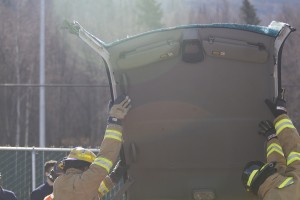
Students turn a mini-van into a convertible to reach injured victims. (Photo by Philip Hall/University of Alaska Anchorage)
Under blue skies and mountain views, the students spent an eight-hour day running scenarios and extracting both dummies and classmates from battered Fords and shattered Chevys. It all made for a unique learning experience, and a definite departure from most other UAA classes.
"It's a lot more fun than sitting down and crunching numbers at a desk," said EMS student James Schwarz. "There's no one way to do things right. Obviously, there is a wrong way to do things, but you get to improvise a lot here. The knowledge that you gain, you can take this anywhere."
And he would know. Just six weeks into his EMS class, James witnessed a car crash in Anchorage and ran to assist, applying emergency aid and shock treatment until the paramedics arrived on the scene.
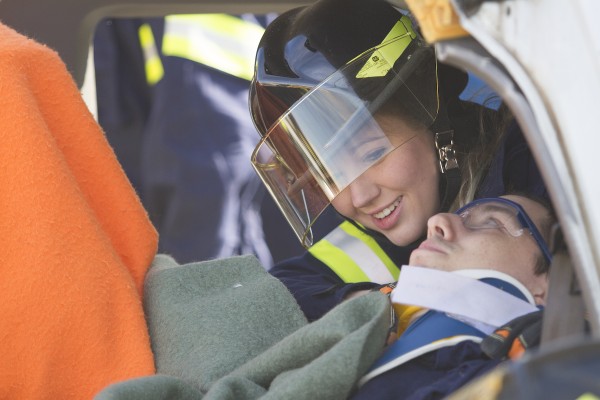
An EMS student reaches her classmate, posing as a crash victim. (Photo by Philip Hall/University of Alaska Anchorage)
"Definitely an eye opener"
EMS students meet for eight hours every single Saturday and, although they run life-saving scenarios in each class, Vehicle Extrication is the one weekend where they can apply their skills outside the classroom. "Being able to take them out and actually apply [skills] with the colors and the sights and smells and sounds, it really just ties it all together and brings it home," Tim noted.
And his students agree.
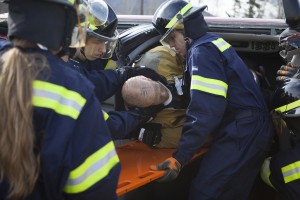
EMS students rescue a victim after fire science students stabilized the vehicle. (Photo by Philip Hall/University of Alaska Anchorage)
"When we're in the classroom, there are a lot of hypotheticals with the scenarios, but it's kind of hard to visualize everything," said EMS student Ben Hagensieker, citing the relative calm in the classroom. "But with actual vehicles rolled over and damaged, and having the fire department on scene, it's easier to piece the whole picture together."
"The class opened my eyes to how difficult it actually is," noted fire science student Brian Rowe. "You think it'd be easy, but the tools are heavy and they don't actually work the way you think."
Brian already serves as a volunteer firefighter and level 1 EMT in Chugiak. Classes like Vehicle Extrication, though, are providing the experience he needs to become a professional firefighter and paramedic. "Every situation is different from the next-you have to open the car differently in every situation," he continued. "It's never going to be perfect, it's never going be just sitting there waiting for you open it. The class was definitely an eye opener and I really enjoyed it."
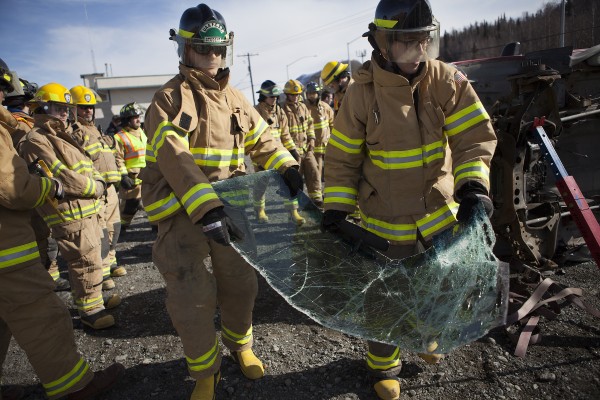
John Janezich (right) walks a sawed-off windshield away from the crash site.
(Photo by Philip Hall/University of Alaska Anchorage)
"I would 100 percent do it again ... That was awesome"
The class has obvious benefits for both fire science and EMS students, but the novelty of donning a fire suit and destroying a vehicle appeals to just about everyone.
John Janezich is not a fire science student-he actually studies math and physics at Johns Hopkins University. He's back in Anchorage this semester, but wanted to take a few classes that just wouldn't be offered back in Baltimore. This wasn't his first brush with a class like this-he's certified as a Wilderness First Responder-but it was certainly a unique way to spend the weekend.
"I just really gained an appreciation for what being a firefighter is and how intense showing up to a crash and rescuing can be," he added. "Until I was incident commander, I had no idea how hard it is to communicate to everyone and to know what's going on."
All in all, it was a pretty valuable way for a math and physics student to pick up another credit towards graduation.
"I would 100 percent do it again," John concluded. "I would do that for a week. That was awesome."
View the full day's photos on Flickr, with captions, on any device. To see the following slideshow full-screen images, click on the arrow icon in the bottom right corner on the slideshow below. While in full-screen mode, an "Options" setting in the upper right-hand corner will allow you to view photo titles and captions.
https://www.flickr.com/photos/128222201@N07/sets/72157649757082843/show
Written by J. Besl, UAA Office of University Advancement
 "Smash and rescue" is licensed under a Creative Commons Attribution-NonCommercial 4.0 International License.
"Smash and rescue" is licensed under a Creative Commons Attribution-NonCommercial 4.0 International License.










